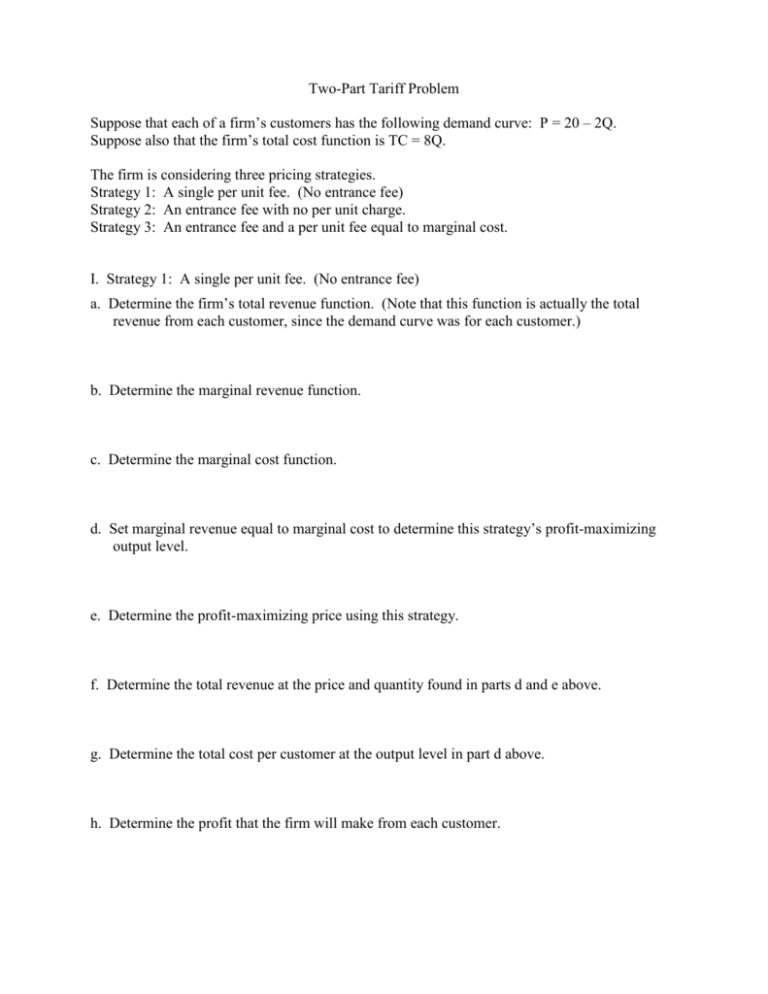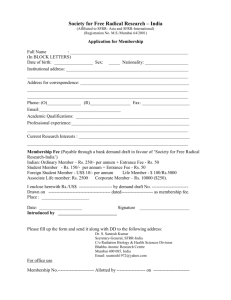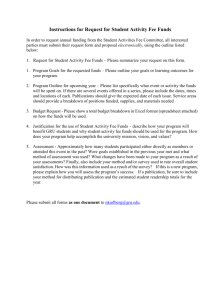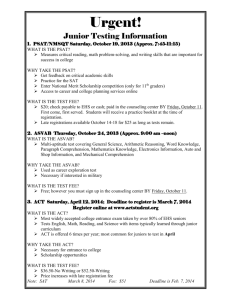Two-Part Tariff Problem
advertisement

Two-Part Tariff Problem Suppose that each of a firm’s customers has the following demand curve: P = 20 – 2Q. Suppose also that the firm’s total cost function is TC = 8Q. The firm is considering three pricing strategies. Strategy 1: A single per unit fee. (No entrance fee) Strategy 2: An entrance fee with no per unit charge. Strategy 3: An entrance fee and a per unit fee equal to marginal cost. I. Strategy 1: A single per unit fee. (No entrance fee) a. Determine the firm’s total revenue function. (Note that this function is actually the total revenue from each customer, since the demand curve was for each customer.) b. Determine the marginal revenue function. c. Determine the marginal cost function. d. Set marginal revenue equal to marginal cost to determine this strategy’s profit-maximizing output level. e. Determine the profit-maximizing price using this strategy. f. Determine the total revenue at the price and quantity found in parts d and e above. g. Determine the total cost per customer at the output level in part d above. h. Determine the profit that the firm will make from each customer. II. Strategy 2: An entrance fee with no per unit charge. a. Use the demand curve equation to determine how much each customer will purchase if there is no per unit charge (that is, P = 0). b. Determine the consumer surplus that the firm can charge each customer as an entrance fee. c. What is the total cost per customer at the quantity consumed by each customer in part a. d. Determine the profit that the firm will make from each customer. (Remember that the total revenue per customer will be the entrance fee since there is no per unit charge.) III. Strategy 3: An entrance fee and a per unit fee equal to marginal cost. a. What is the marginal cost and therefore the price charged per unit based on this strategy? b. At the price found in part a, what quantity will each customer purchase? c. Determine the firm’s revenue from the per unit charge, using the answers to parts a and b. d. Determine the consumer surplus that the firm can charge each customer as an entrance fee. e. Determine the total revenue from each customer using the answers to parts c and d. f. Determine the total cost at the quantity found in part b. g. Determine the profit that the firm will make from each customer. IV. Which of the three strategies will provide this firm with the greatest profit per customer?



